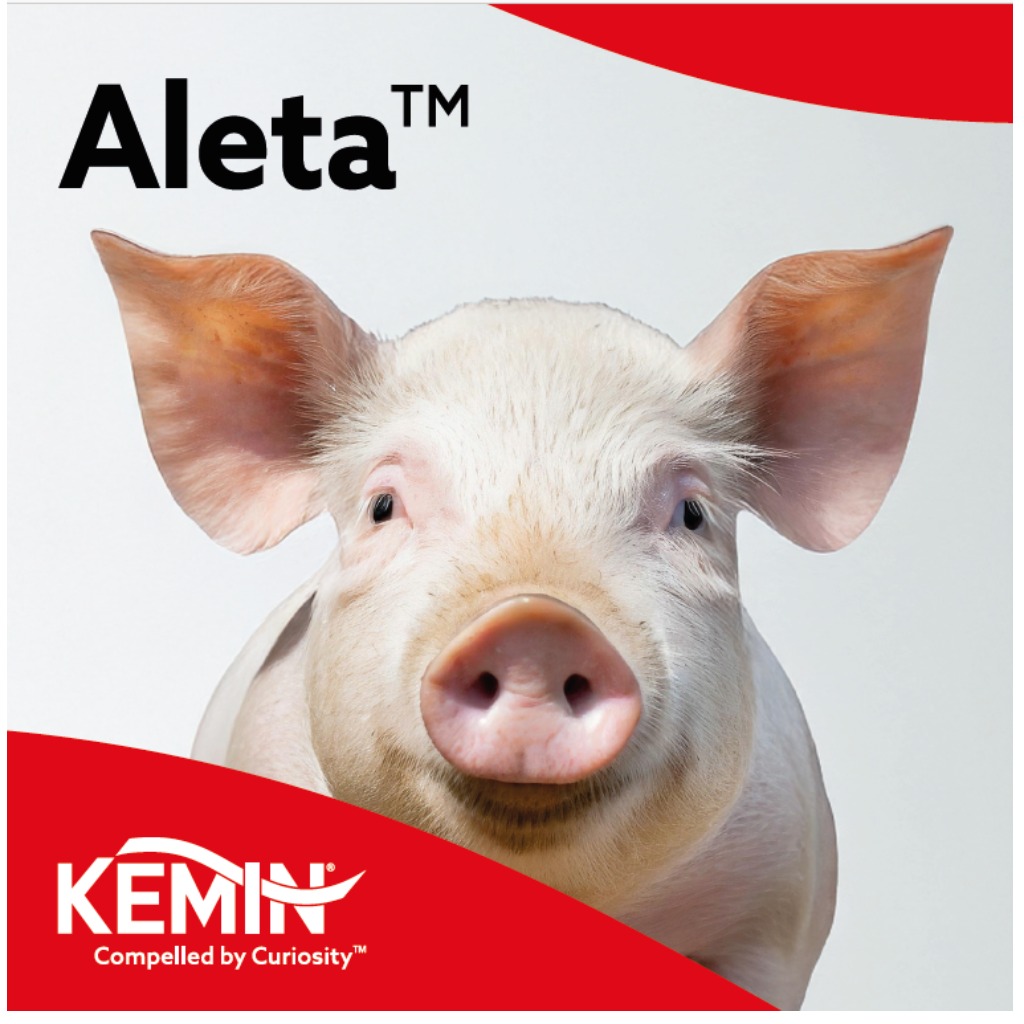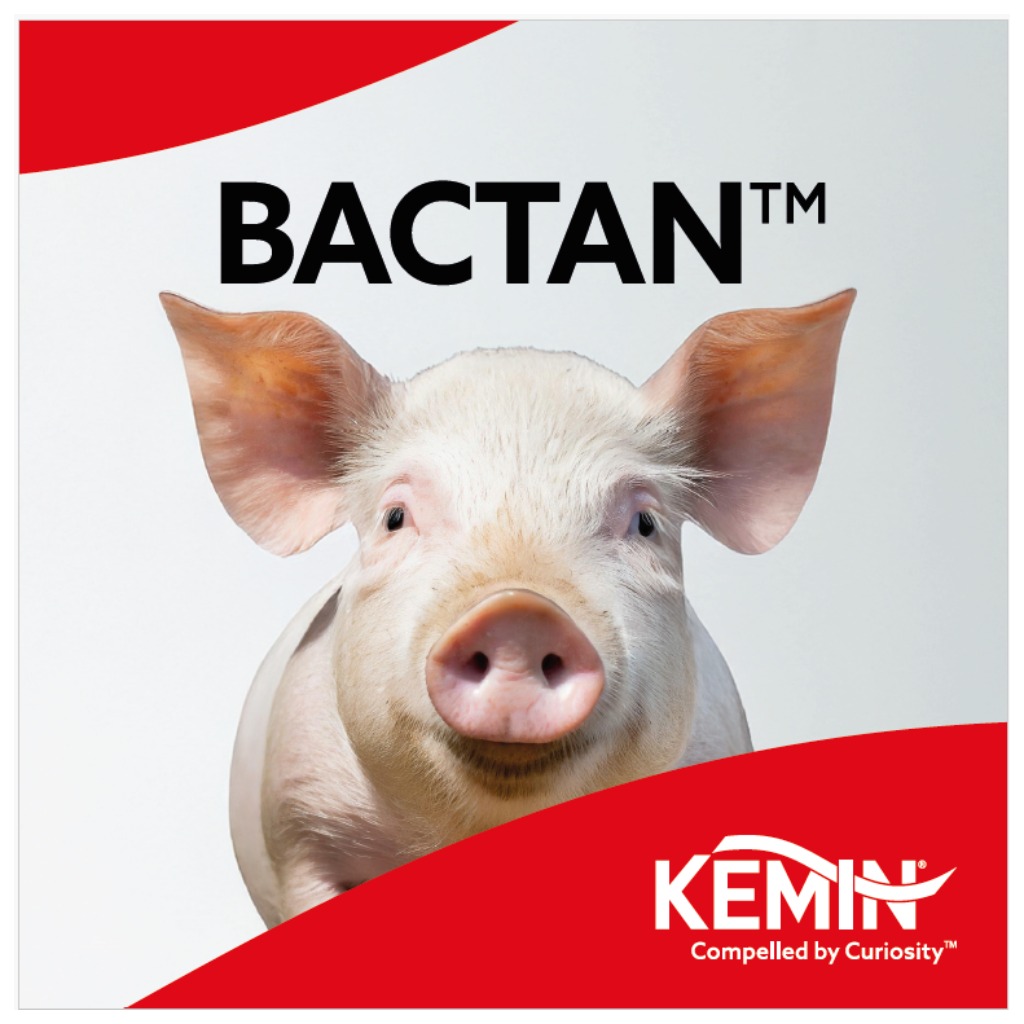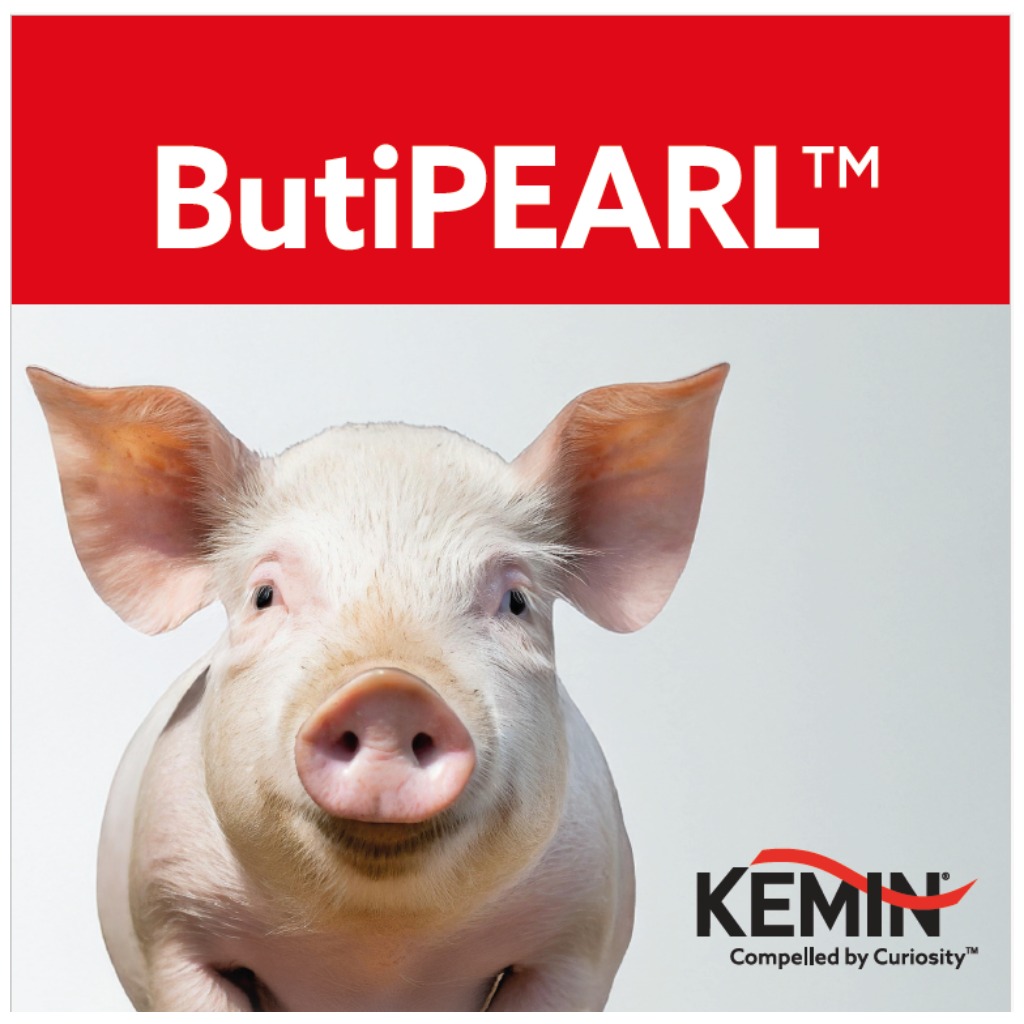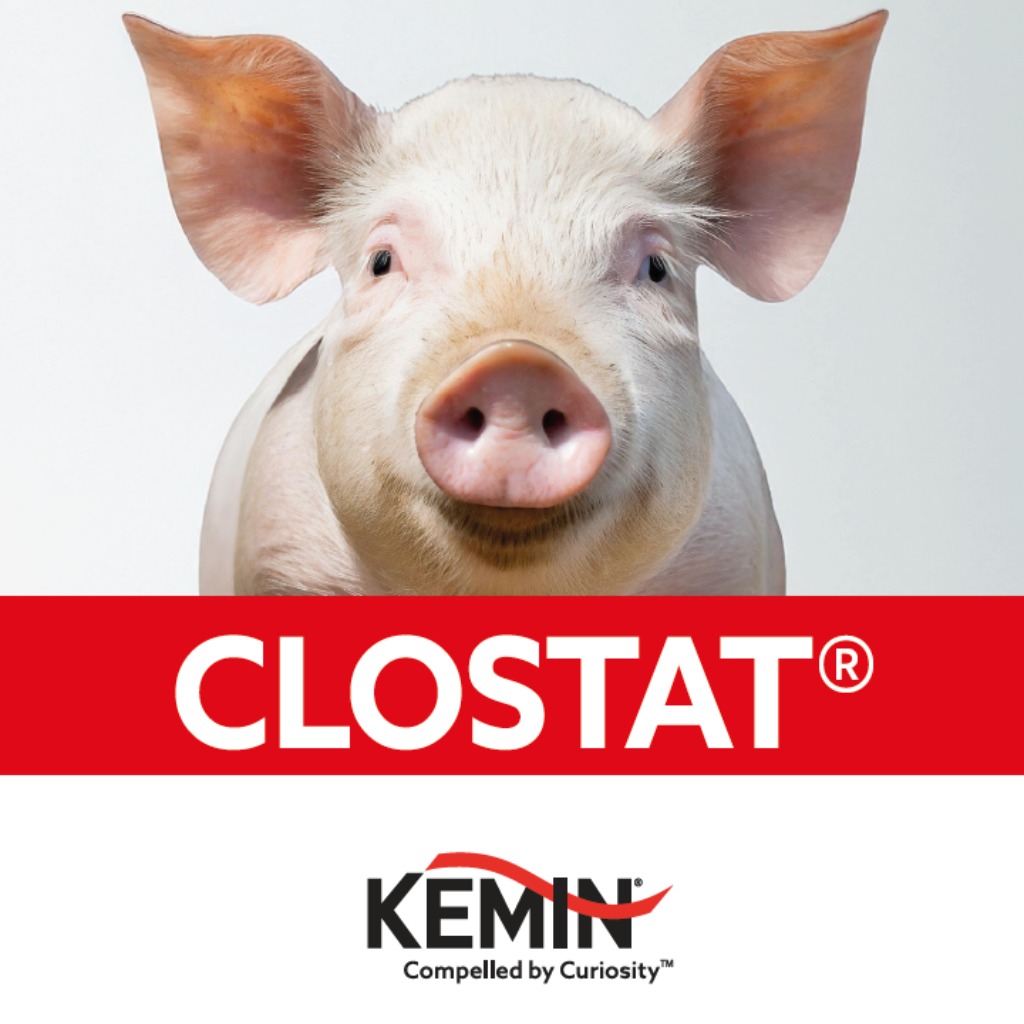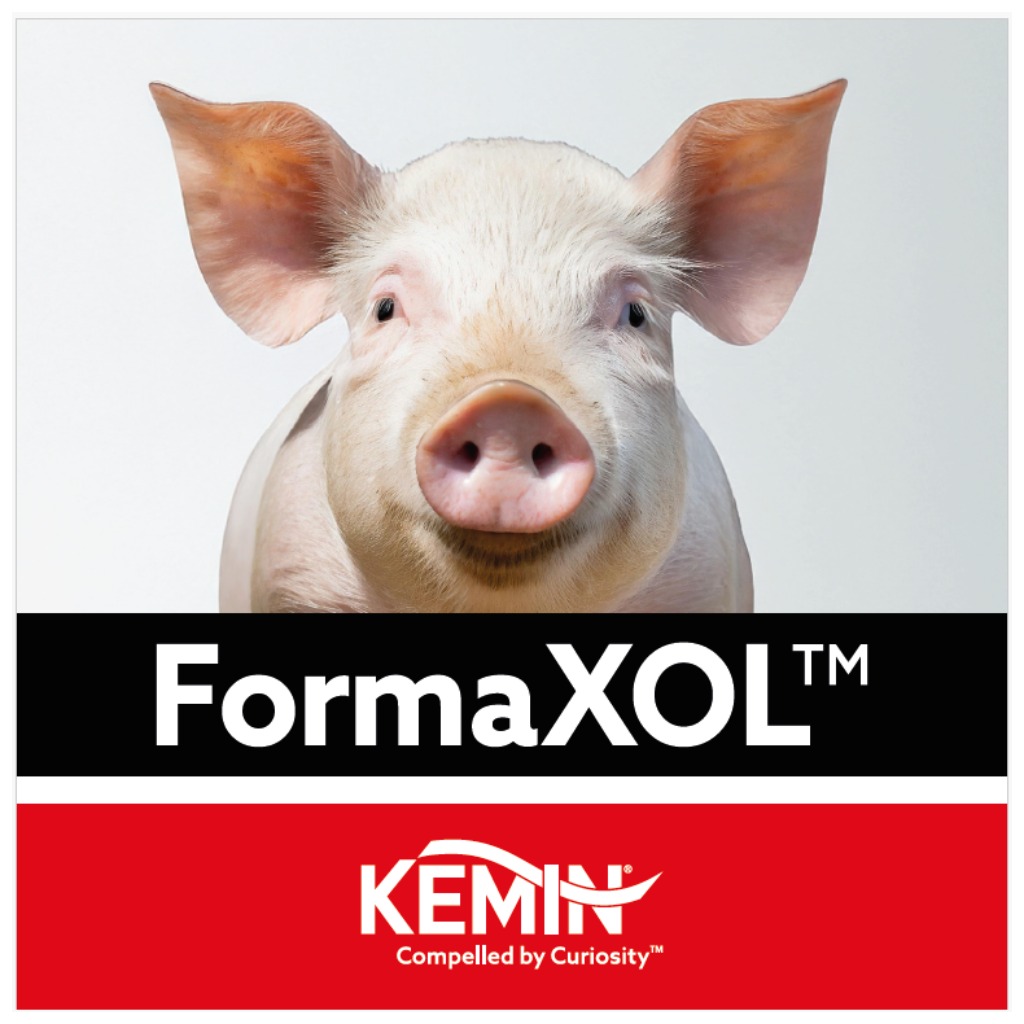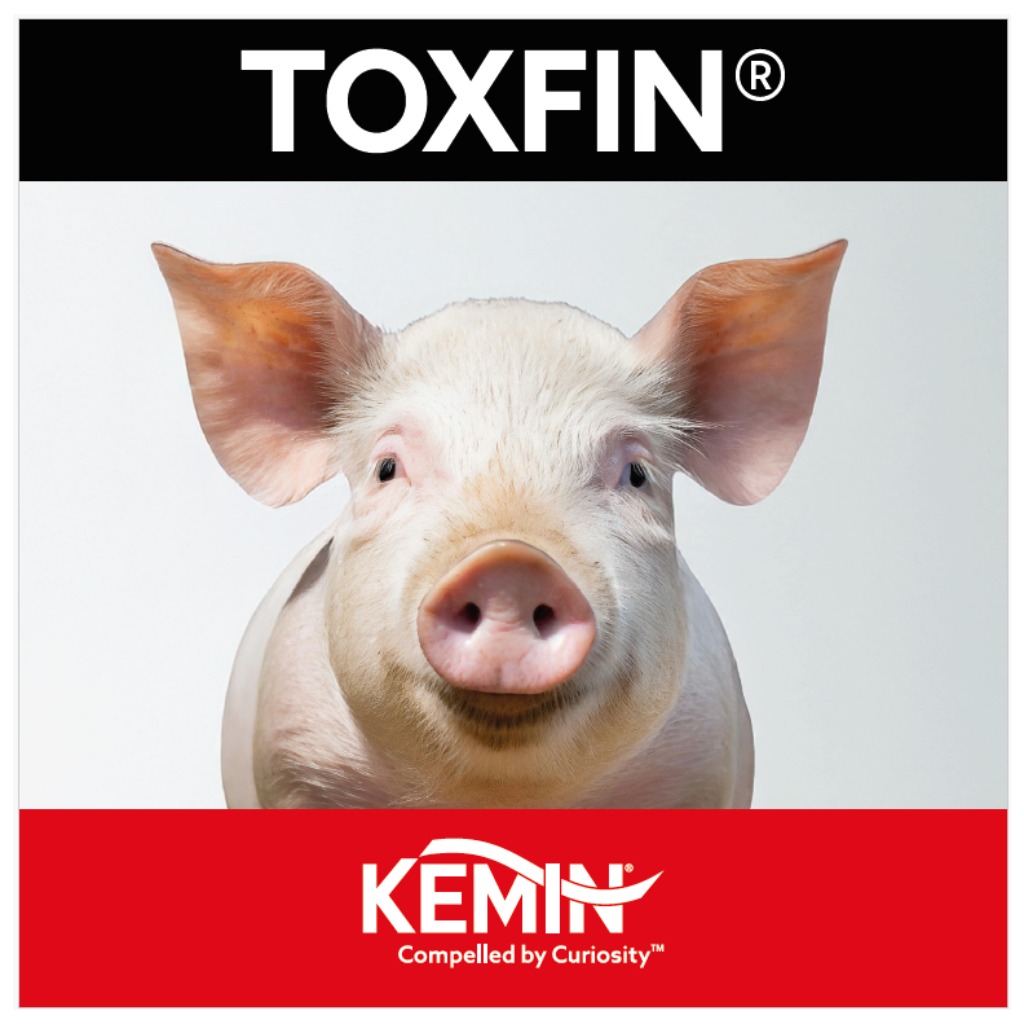Mycotoxins in pigs, are they silent profit killers?
Mycotoxins, fungal secondary metabolites, pose a significant threat to the livestock industry, particularly swine production. These toxins are created as a self-defense mechanism when molds compete with other microorganisms or are under stress. When ingested, These biologically active compounds disrupt critical cellular functions in swine, affecting the intestines, kidneys, liver, reproductive system, and the immune system. Optimal conditions of temperature and humidity, facilitated by more extreme climates induced by climate change, facilitate mold and multicellular fungal growth, leading to the inevitable infestation of cereals and grains intended for animal feed.
Complete eradication of mycotoxins from feed is impractical; however, minimizing swine exposure is crucial. The impact of each mycotoxin varies based on its concentration, the metabolic status of the animal, and duration of exposure. Zearalenone (ZEA), an estrogenic mycotoxin, is known to impair reproductive performance in swine, with concentrations ≤ 5 mg/kg causing vulvovaginitis in young female pigs. ZEA's toxicity extends beyond reproductive issues, leading to cytotoxic, hepatotoxic, and haematotoxic effects.
feed is impractical; however, minimizing swine exposure is crucial. The impact of each mycotoxin varies based on its concentration, the metabolic status of the animal, and duration of exposure. Zearalenone (ZEA), an estrogenic mycotoxin, is known to impair reproductive performance in swine, with concentrations ≤ 5 mg/kg causing vulvovaginitis in young female pigs. ZEA's toxicity extends beyond reproductive issues, leading to cytotoxic, hepatotoxic, and haematotoxic effects.
Deoxynivalenol (DON) exposure compromises immune function by altering cytokine expression, which is essential for immune responses to pathogens. Chronic exposure diminishes the animal's capability to respond to vaccinations effectively. Trichothecenes, upon reaching the gastrointestinal tract, impair intestinal cell viability, making animals susceptible to infections. Ochratoxin A (OTA) disrupts renal metabolic functions by interfering with enzymatic reactions. Nowadays, due to efficient control, clinical mycotoxicosis is less prevalent and more subtle effects are noticed. Sub-clinical effects manifest through reduced nutrient uptake, digestive disorders, lowered immunity, and consequent performance and economic losses. Understanding the complexity and impact of mycotoxins is vital for developing effective strategies to mitigate their presence in pig feed.
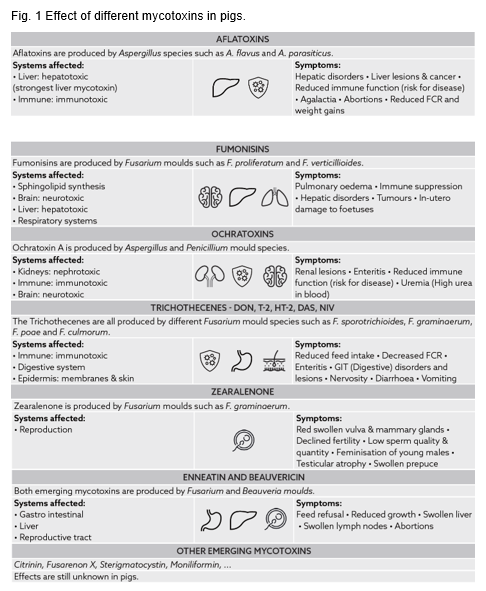
Prevalence Study: How well do you know your feed?
Understanding the prevalence and seasonality of mycotoxins is crucial for effective management, as clinical signs often appear too late. To address this challenge, we conducted a small-scale prevalence study to assess the impact of subclinical mycotoxicosis in breeding herds in the Netherlands.
Materials and Methods
The study was conducted over one year (September 2022 to August 2023) across six Dutch breeding herds: three without any signs of mycotoxin presence and three with suspected mycotoxin issues due to suboptimal management or periodic clinical symptoms, such as necrotic tails indicative of T-2 presence. Gestation, lactation, and piglet starter feeds from each herd were sampled quarterly and analyzed for FUM, OTA, T-2/HT-2, DON, and ZEA using LC-MS/MS.
Results
A total of 98 samples were evaluated. There was no significant difference in the prevalence of DON, ZEA, OTA, and FUM among the farms. Overall, 64% of samples tested positive for DON, 66% for T-2/HT-2, 58% for ZEA, 37% for OTA, and 30% for FUM. Additionally, 66% of samples were found to have two or more mycotoxins. Notably, 10% of samples exceeded risk levels for DON and ZEA, while none exceeded risk levels for FUM or OTA. Farms reporting necrotic tails had T-2/HT-2 contamination levels up to 57 ppb. Mycotoxin prevalence showed a seasonal pattern, with the highest contamination levels in summer 2023, particularly for FUM.
Conclusions
The study indicates that subclinical mycotoxicosis due to ZEA and DON is common, as all farms reported at least one feed sample exceeding risk levels without showing clinical symptoms. The occurrence of necrotic tails could be associated with higher HT/T-2 levels. Currently, there are no EU guidance levels for T-2 in pig feeds, only indicative levels for the sum of T-2 and HT-2 toxins in cereals and cereal products used in compound feed. This study emphasizes the importance of considering T-2/HT-2 presence in pig feed, despite the lack of specific guidance levels.
Prevention and control A holistic solution for every pig producer
1-Prevention of Mold growth
- Prevent mold development on crops and during the storage of feed and raw materials with a mold inhibitor.
- Key Aspects to look at selecting the right mold inhibitor:
- Broad-Spectrum Protection: Effective against a wide range of molds for prolonged periods.
- Non-Corrosive Formula: Gentle on equipment, ensuring long-term operational efficiency.
- High Efficacy at Low Inclusion Rates: Ensures uniform application across different feed types, leading to significant cost savings.
- Safe and Easy Handling: Designed for user convenience and safety
2- Management of Mycotoxins
Effective mycotoxin management can be achieved by adjusting feed formulations to include lower levels of high-mycotoxin raw materials. Another option is incorporating advanced mycotoxin binders, which act within the animal to prevent mycotoxins from causing harm.
Mycotoxin binders reduce the bioavailability of mycotoxins and protect swine from their adverse effects. To comprehensively address mycotoxin-related health disorders, an effective binder should:
- Reduce the bioavailability of mycotoxins in the animal using blends of adsorbents
- Address oxidative stress in sows and weaning piglets
- Support liver and kidney health
- Modulate the immune system
Conclusion
In summary, pigs are particularly sensitive to DON, Zearalenone, and Fumonisins. Effective risk mitigation involves monitoring high-risk raw materials. Although clinical mycotoxicosis has become rare due to efficient control measures, subclinical effects continue to pose a significant concern, adversely affecting pig health and production. To prevent and manage mycotoxins, it is essential to implement a comprehensive mycotoxin solution.
Contact:
Contact us using the following form.


